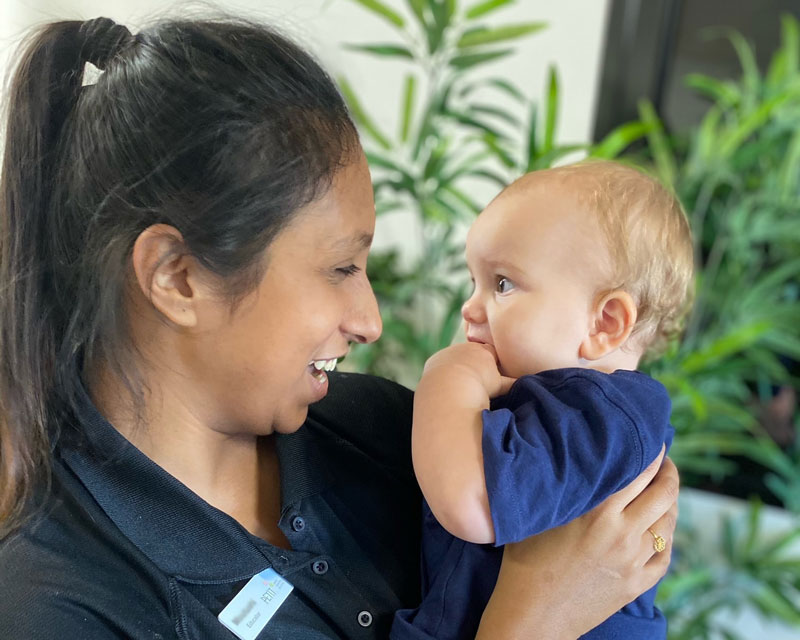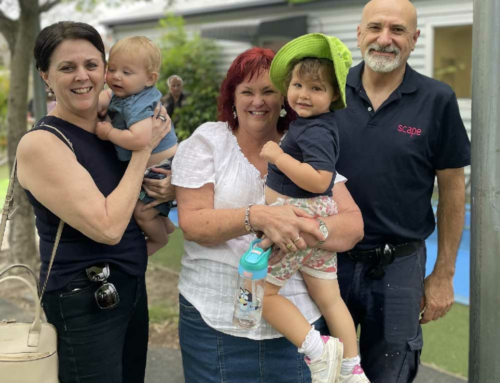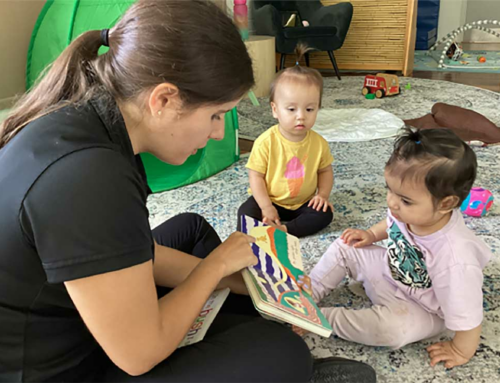Preparing for a newborn baby can feel daunting, especially if you are a first time parent. There are clothes and nappies to buy, bookcases and other furniture to anchor down, and more table edges and electrical sockets than you imagined to cover up.
It is easy to get ahead of yourself, but your baby’s house will be fine if you take the preparation slowly. The first three months of your baby’s life are all about bonding. There is plenty of time yet before your baby crawls and you can continue to prepare after you bring your baby home.
Decorating and preparing the baby’s nursery can give expecting families an excellent excuse to rediscover their inner child. Although, if this is your first child, you may have essential baby supplies to gather like baby bottles, a breast pump and baby clothes.
Our tips on the preparation for a newborn infant cover:
- Vital tasks to get your house in order
- Nursery preparation
- How to live in a small house with a baby
- Self-care essentials
- Keeping your new baby safe
- Things to do outside the home

Getting your house in order
Every “Prepare for a Newborn” book covers safety information, including anchoring objects that can tip and placing baby gates at stairwells. But those only cover part of what it means to get your house in order. When a newborn infant arrives no moment of your life is untouched.
- Freeze precooked meals. Having a freezer full of ready-made meals is a lifesaver. Prepare nutritional meals like soups, casseroles, oven-ready suppers and microwave meals for those late-night sessions. The more you plan, the easier life is with a newborn.
- Stock up your pantry. A pantry that is well stocked with essential items for several weeks following your baby’s birth means more time for you and your newborn. Remove expired tins and suspect rice and pasta so there are no nasty surprises for your dinner.
- Deep clean your home. Get rid of the dust, clean the walls and behind the refrigerator, suck up those cobwebs on the ceiling and cornice pieces. After you shine the ceiling fans, book in your professional steam cleaning carpet service. If you’re pregnant, avoid lifting furniture and enlist the help of significant others to lighten your cleaning workload.
- Set up the guest room. Family may come from all over the globe to meet your newest child. Invite them in with fresh sheets, soap and clean towels. Once your guest settles, those extra pairs of hands can be super helpful for doing chores while letting you sneak in a few naps to avoid sleep deprivation.
- Create dedicated quiet spaces. The baby has the nursery and every other room in the house. The family or lounge room becomes a place of discovery and new experiences. As new families are under immense stress to “do it right,” having a space for each person dedicated to quiet, alone time is vital for maintaining good mental health.
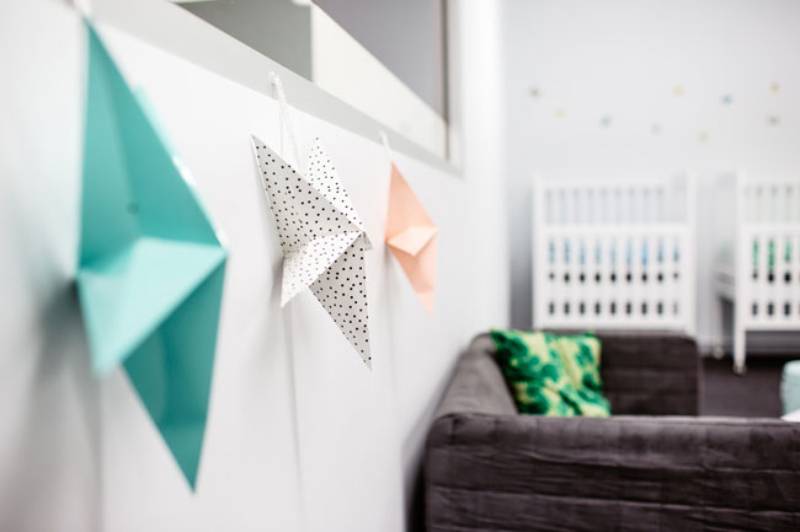
Preparing the nursery for more than just sleeping
Some families spend years dreaming of the nursery and spare no expense, while others have little time to prepare. Newborn babies love being anywhere if they are kept warm, safe and loved. The nursery is the baby’s first glimpse of the world; what they want to see most is you.
- Paint the nursery well in advance. If you’re going to give your baby’s room a fresh coat of paint, do it well before you head out the door to give birth. You will need to open up the room and allow time for the colour to dry thoroughly.
- Turn old things into new. One joy when preparing your new child’s room is finding old baby equipment and giving them new lease on life. Paint can cheer up any second-hand dresser or a hand-me-down baby cot. Plus, using second-hand furniture supports sustainability.
- Add a nursing chair. Choose a comfy seat for family members nursing your new baby and night feeds. Some families prefer a nursery rocking chair, while others use nursing pillows. Factor in how much space you have in the nursery when choosing a suitable comfy chair.
- Organise your nappy changes. Preparing the nursery means planning for the many nappy changes and midnight onesie swaps. Keep a chest of drawers with baby care needs in the top draw. Place the nappies in the first drawer, clothes in the second, and clean sheets in the bottom.
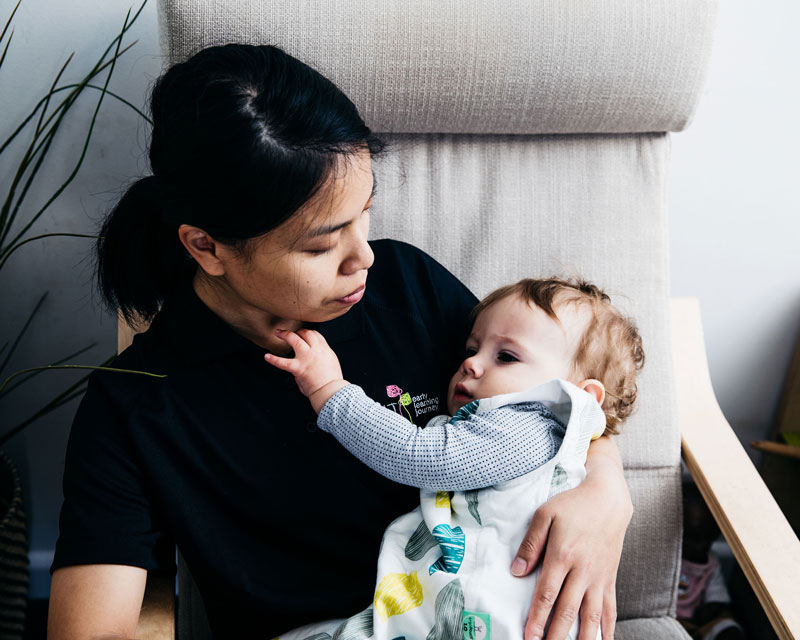
How to live in a small house with a baby: Repurposing the family room
When there is little space at home, preparing the family room for a baby can seem overwhelming. There are outlets to block, objects to move, and that feeling that a newborn changes everything.
- Add a bassinet. New babies sleep a lot so bassinets are handy safe sleep choices for family rooms in tiny houses. They take up less space than cribs. Many bassinets are portable allowing you to move with your child from one room to another. By the time they are four months old, babies are usually too big for a bassinet. Baby carriers, slings and backpacks are also useful equipment.
- Throw down a blanket or baby floor mat. A mat or baby blanket is the next best thing in the lounge room for a baby. You can use it for floor play, tummy time, or just lying down with your baby to tickle their toes and sing nursery rhymes.
- Keep a shoe box of natural materials. Baby toys are not necessary in those first few weeks. Instead, a carefully stored box of natural materials and wooden things for sensory play can entice a young baby’s interest and curious mind. Sensory items for a baby’s delicate skin might include:
- Feathers – fabulous for feeling
- Leaves – a mix of different leaves from your neighbourhood
- Flowers – great for scents
- Seeds – like an Australian Woody Pear
- Stones – cool, smooth stones provide contrast
- Shells – collect from the beach

Remembering self-care
Bringing a newborn baby home changes everything all at once. It is both beautiful and overwhelming for families. Postpartum depression can affect all family members and remembering to take time out for self-care is vital for the amazing adventure ahead.
- Prepare to be pampered. Whether it is an hour-long undisturbed bath or simply watching a thirty-minute guilty-pleasure television show, taking time to focus on yourself before and after the newborn’s arrival can change the experience.
- Ask for help. Before the newborn infant arrives home, make plans and arrange times for self-care and embrace that help as part of the experience. Asking older children for help can avoid sibling jealousy.
- Join a community group for new and expecting families. You are not alone in this new adventure. Whether you join a local parents group or an online support forum, community groups offer various services, including emotional support and wellbeing.
- Stock up on personal essentials. In those first few weeks, you may want to stay home and welcome visitors. Breastfeeding families will need to have nursing bras and breast pads handy.
- Attend childbirth classes. Antenatal classes are useful for discovering the finer details about labour, birthing options and breastfeeding. Along with specialised breastfeeding classes these help you organise a birthing plan and prepare for a new infant. Baby CPR classes can be a lifesaver.
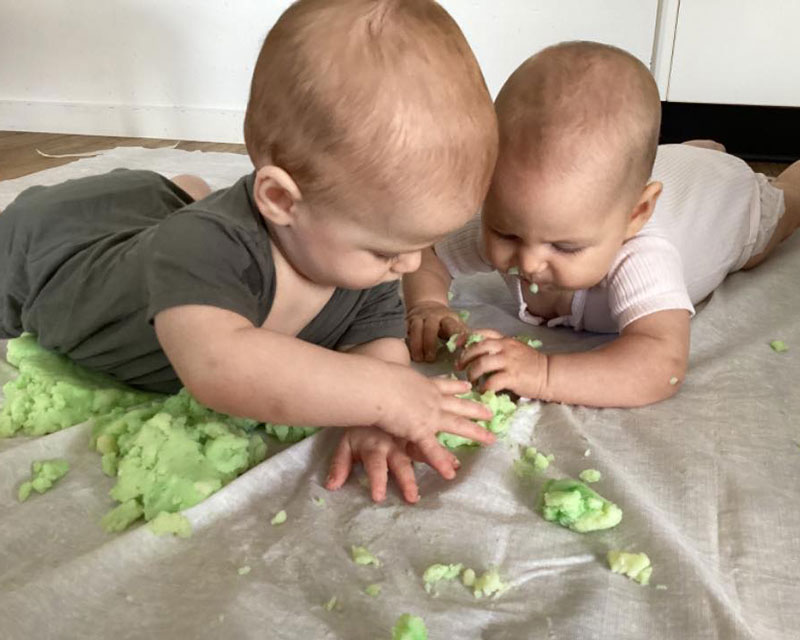
Keeping your baby safe and secure
Some safety aspects can wait until after your baby arrives as your newborn infant won’t be roaming the house anytime soon. However, for families that like to be ultra prepared, we recommend adding these tasks to your baby checklist of things to do at home.
- Block electrical outlets. Babies are curious creatures; once they find their legs, there will be many more things for them to discover. Keep them safe by baby proofing outlets and cords.
- Anchor objects that might tip. Look around your home for bookshelves, tall boys, television units and other furniture that has the potential to tip over. To keep your baby safe, secure these items to the wall behind.
- Cover those sharp corners. Protect your baby from sharp corners such as those on low-lying tables or fireplaces. You can purchase corner protectors or DIY by using baby safe materials. Alternatively, move unsafe furniture out of your baby’s way.
- Install baby safety gates. While choosing safety baby equipment look to Australian safety standards. These help keep children safe from areas of the house such as stairs, kitchen, laundry and pools.
- Empty that bath. Remind family members to empty tubs and sinks after use and to keep the bathroom floor dry. Have an area set aside for your baby bath and bath time essentials.
- Address high risks. Secure toxic chemicals, poisons and medications in a locked cabinet that is preferably up high and out of your child’s reach.

Outside the home: Expecting and organised
- Start thinking about your child’s care. While you may not be returning to work for 12-months or more, some early childhood education and care services have waiting lists. Look into the different types of care and book those tours now
- Prepare the car and fill the tank. That first ride home is precious. Have the car seat professionally installed and ask for instructions on adjusting it. What sounds will your baby hear on their first ride home?
- Let your employer know what is happening. Notify your employer in writing of your intended leave and return times.
- Take your pram for a test drive. A newborn baby should be able to lie down fully in their pram. Practise unfolding and folding it, putting on the brakes and placing it in the boot of your car. Does the baby’s bag stow away quickly and safely underneath?
- Be packed and ready to go. Have your maternity bag packed to go at 35 weeks. Ask your hospital what you need to bring with you for your birth plan. Let your birthing partner know where you have stored your bag.
The most important thing to remember when preparing your house for a baby is that it does not need to be perfect. Babies want to be nurtured, to feel your warmth and be safe and secure. The newborn phase is all about bonding and welcoming your child to their new home. It is an exciting time for the whole family.

Be prepared with Petit Early Learning Journey
We believe building partnerships with families supports a child’s health and wellbeing. Children flourish when surrounded by people who care deeply about them.
Education and care happens all day long at our centres and it is integrated into our curriculum, routines, rituals and rhythms. When our educators share positive bonds with families and their children it develops trust and communication.
To learn more about preparing for your newborns’ learning and care and the value we place on our family partnerships, we invite you to visit your nearest centre.
